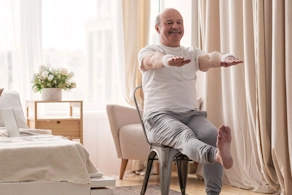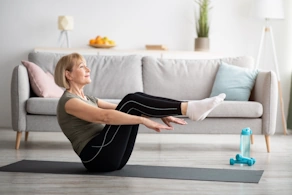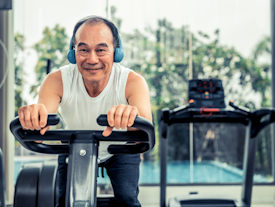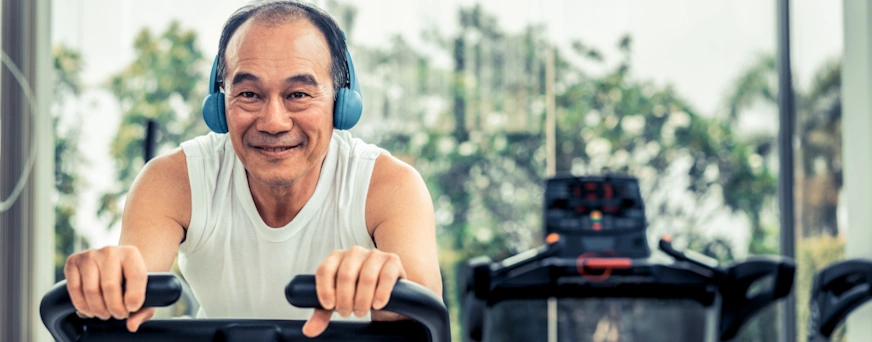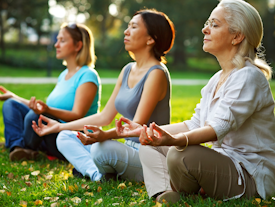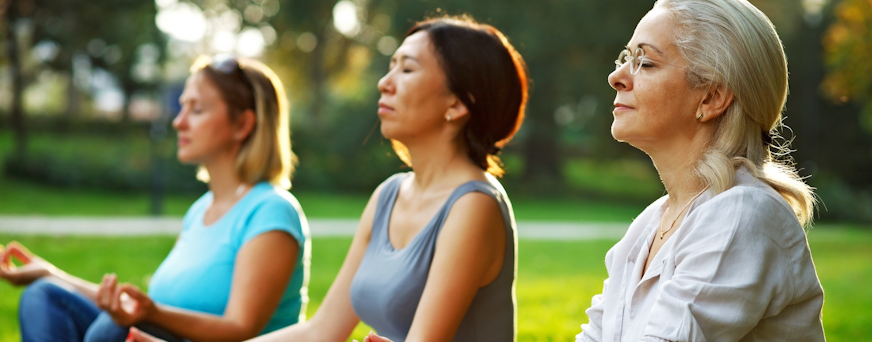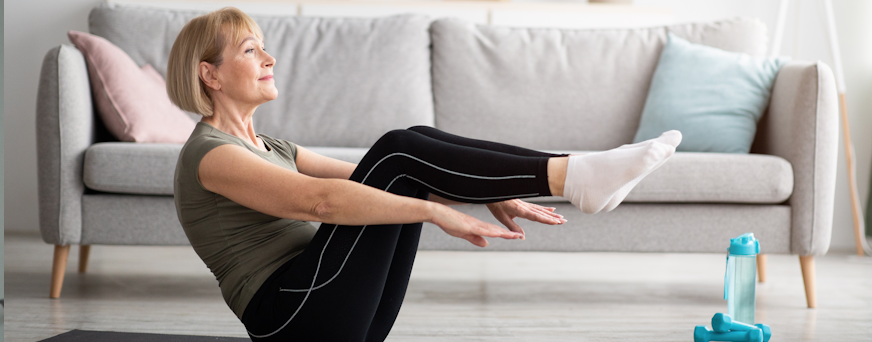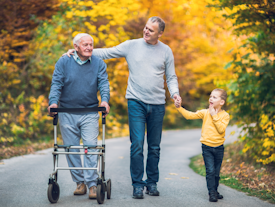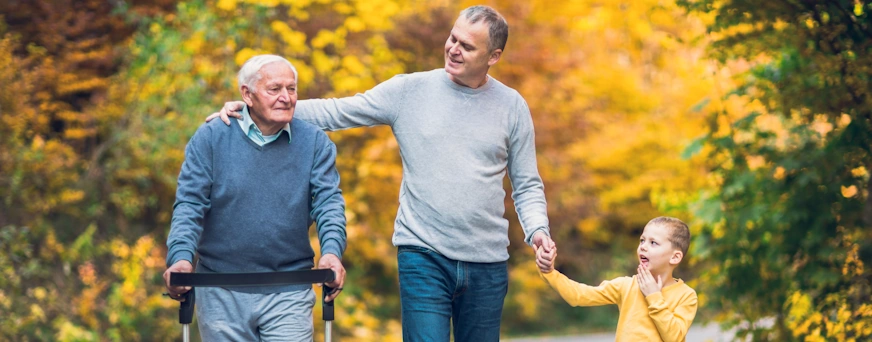Low-Impact Leg Exercises For Seniors: Strengthen Your Legs & Improve Balance
Leg strength supports mobility, balance, and independence. Weak legs increase the risk of falls, which can lead to serious injuries and long recovery periods. Fortunately, low-impact leg exercises for seniors can strengthen muscles, improve coordination, and enhance stability to reduce fall risks.
Incorporating these exercises into a daily routine helps seniors stay active and move with confidence. Whether seated or standing, these movements strengthen the thighs, calves, and ankles while improving balance without straining the joints.
Life Assure Product Quiz
Find The Perfect Medical Alert Device
Take our 30 second quiz and discover which Life Assure medical alert device is the right fit for you or a loved one.
Life Assure Product Quiz
Find The Perfect Medical Alert Device
Take our 30 second quiz and discover which Life Assure medical alert device is the right fit for you or a loved one.
Why Leg Strength Is Crucial For Seniors

Leg strength plays a direct role in stability and mobility. Falls remain a leading cause of injury-related hospital visits, with Statistics Canada reporting that 20% to 30% of seniors experience at least one fall annually. Strengthening the legs helps lower this risk by improving balance and coordination.
Lower-body muscles support walking, climbing stairs, and standing up from a chair. Weakness in these muscles makes movements more difficult and increases the risk of imbalance.
Leg exercises promote strength, flexibility, and proprioception—the body's ability to sense movement and positioning. These benefits help seniors move confidently and maintain long-term independence.
Safety Considerations Before Starting Leg Exercises
Before beginning any new exercise routine, seniors should take precautions to ensure safe movement. While leg exercises provide significant benefits, improper technique or overexertion can increase the risk of discomfort or injury.
Seniors should first consult with a healthcare provider, especially if they have existing medical conditions, joint pain, or a history of falls. A doctor or physical therapist can recommend modifications suited to individual mobility levels.
To create a safe exercise environment:
- ● Use stable support: Performing exercises near a sturdy chair, counter, or wall provides extra stability if needed.
- ● Wear proper footwear: Supportive, non-slip shoes improve traction and help prevent accidental slips.
- ● Move with control: Slow, steady movements reduce strain on muscles and joints while maximizing effectiveness.
- ● Avoid overexertion: Stretching before and after exercise reduces stiffness, and listening to the body prevents unnecessary strain.
- ● Stay hydrated: Proper hydration supports muscle function and circulation, reducing the risk of cramping.
The Best Leg Exercises For Seniors Concerned With Falls
Incorporating leg exercises for seniors into a daily routine helps improve strength, stability, and coordination, making movement safer and more comfortable. These low-impact exercises target key muscle groups while reducing joint strain, supporting overall mobility and fall prevention.
Seated Leg Lifts
Sit in a sturdy chair with feet flat on the floor and back straight. Slowly extend one leg straight out while keeping the other foot planted. Hold for a few seconds before lowering it back down. Repeat on the other leg. Perform 8–10 repetitions per leg.
This exercise strengthens the quadriceps and enhances flexibility without putting pressure on the knees. It also improves circulation, helping to reduce stiffness and discomfort.
Standing Calf Raises
Stand with feet hip-width apart, holding onto a chair or counter for support. Slowly rise onto your toes, lifting your heels off the ground. Hold for a moment before lowering back down. Repeat for 10–12 repetitions.
This movement strengthens the calves, improves ankle stability, and enhances balance. Strong calf muscles provide better control while walking, making everyday movements like stepping onto curbs or climbing stairs easier.
Chair Squats
Sit at the edge of a sturdy chair with feet shoulder-width apart. Press through the heels and slowly rise to a standing position. Lower back down with control, keeping the knees aligned over the feet. Repeat for 8–10 repetitions.
Chair squats strengthen the thighs, glutes, and core, helping seniors stand up from chairs or beds with greater ease. This movement also improves coordination and supports safer mobility.
Ankle Circles
Sit comfortably with feet flat on the ground. Lift one foot slightly off the floor and rotate the ankle in slow, controlled circles. Perform 8–10 circles in one direction, then reverse before switching to the other foot.
Ankle circles increase flexibility, improve circulation, and enhance joint mobility. Strengthening the ankles helps with balance and reduces the risk of stumbling or twisting an ankle while walking.
Heel-To-Toe Walk
Stand tall and place one foot directly in front of the other so that the heel of the front foot touches the toes of the back foot. Walk forward in a straight line, using a counter or wall for support if needed. Take 10–15 steps before turning around and repeating.
This exercise improves coordination and strengthens the lower legs, making balance adjustments easier and reducing fall risks. Practicing this movement daily enhances walking stability and confidence.
These exercises are gentle yet effective for maintaining leg strength and balance. Seniors should start with a few repetitions and gradually increase as they feel more comfortable. Consistency is key to long-term mobility and fall prevention.
Tips For Incorporating Leg Exercises Into Daily Routine

Staying active is easier with the right support. Seniors looking to enhance their leg exercises can explore various resources to stay motivated and ensure proper form.
- ● Community Fitness Programs: Many local senior centres and recreation facilities offer low-impact exercise classes designed for older adults. These classes provide guided instruction and social interaction, making exercise more enjoyable.
- ● Online Exercise Tutorials: Seniors who prefer exercising at home can access free or subscription-based online videos focused on mobility, strength, and balance exercises.
- ● Physiotherapy Support: Consulting a physiotherapist helps seniors develop a personalized exercise plan suited to their abilities and needs. Professionals can recommend modifications to ensure safety and effectiveness.
- ● Medical Alert Systems: For seniors concerned about exercising alone, medical alert devices like Life Assure’s systems provide added peace of mind. These devices ensure quick access to emergency help if needed.
Additional Resources For Senior Fitness
Canadian seniors looking to enhance their leg exercises have a variety of resources available to support their fitness journey. Community fitness programs, local senior centres, and online exercise classes can help adults confidently incorporate leg exercises into their daily lives, reducing fall risks and enhancing overall well-being. Physical therapists and senior fitness trainers can provide personalized guidance, ensuring exercises are performed safely and effectively.
Conclusion
Strong legs support mobility, balance, and long-term independence. By incorporating leg exercises designed for seniors into a daily routine, older adults can reduce the risk of falls and stay active longer. Consistency is key—just a few minutes of movement each day makes a difference.


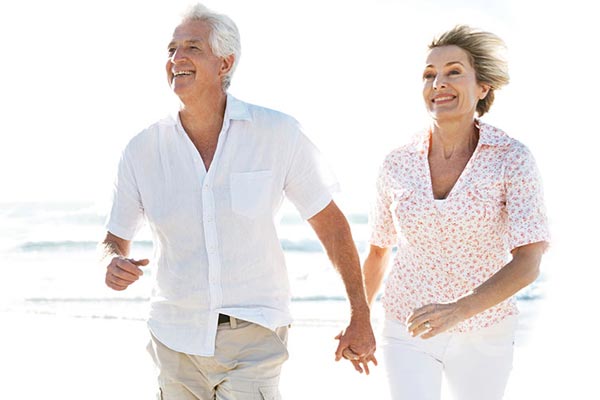
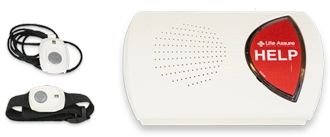

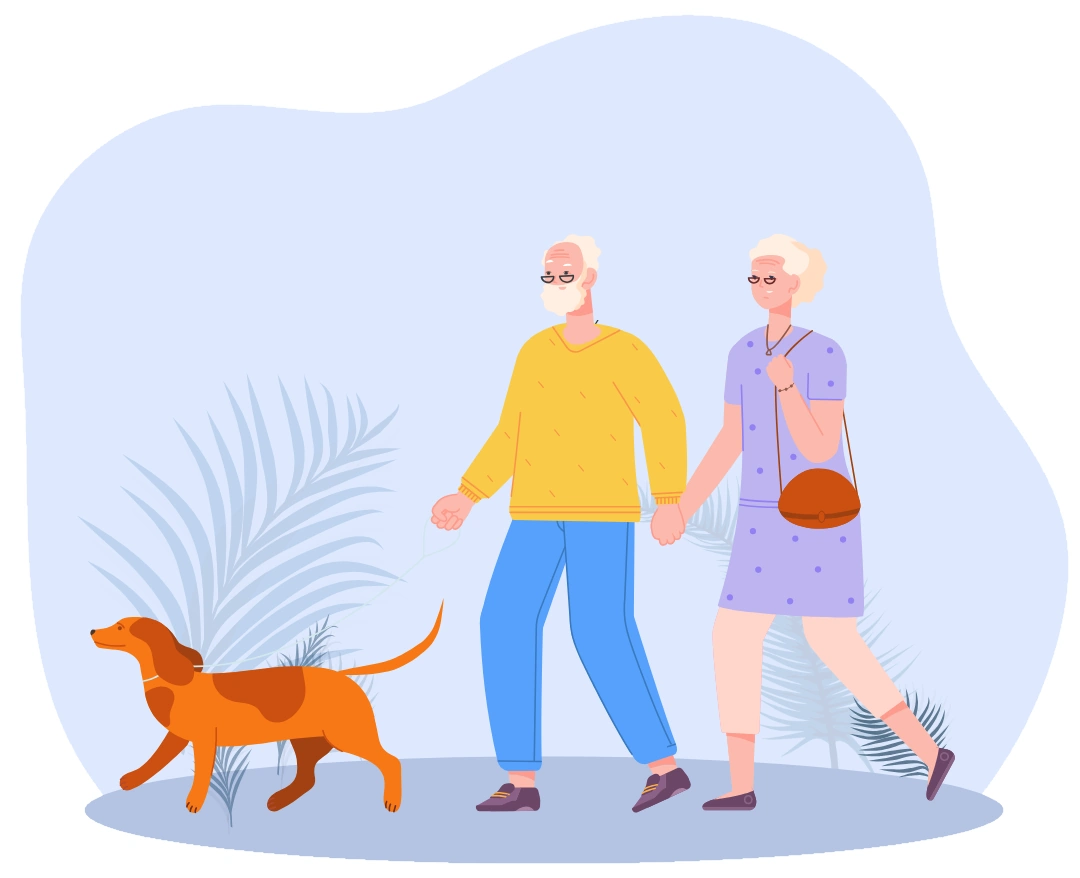




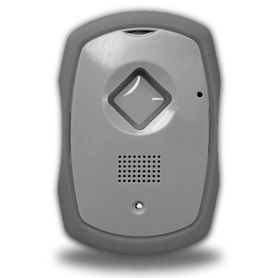
 Get Help With The Push Of A Button
Get Help With The Push Of A Button
